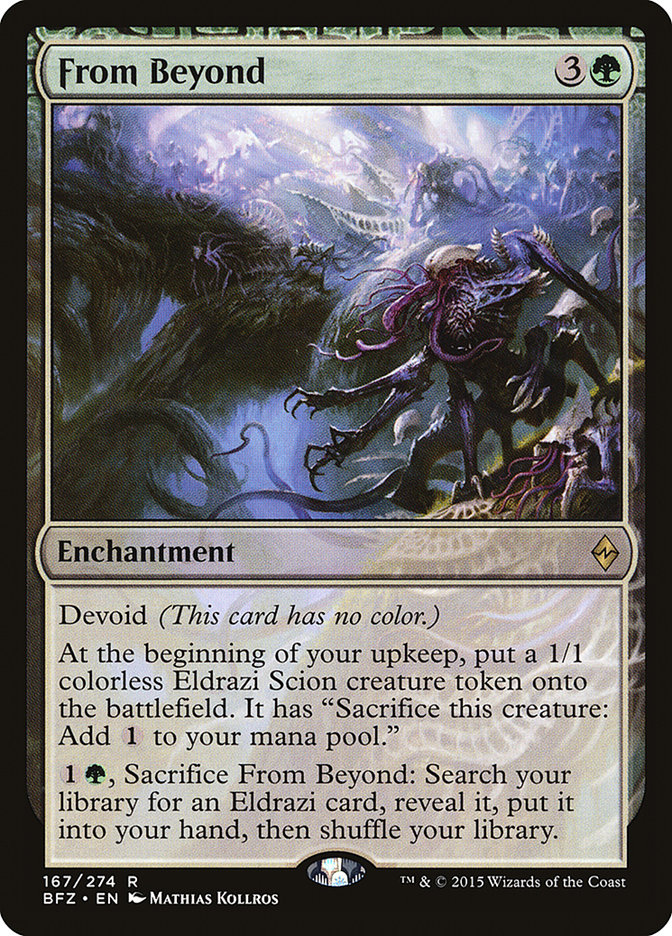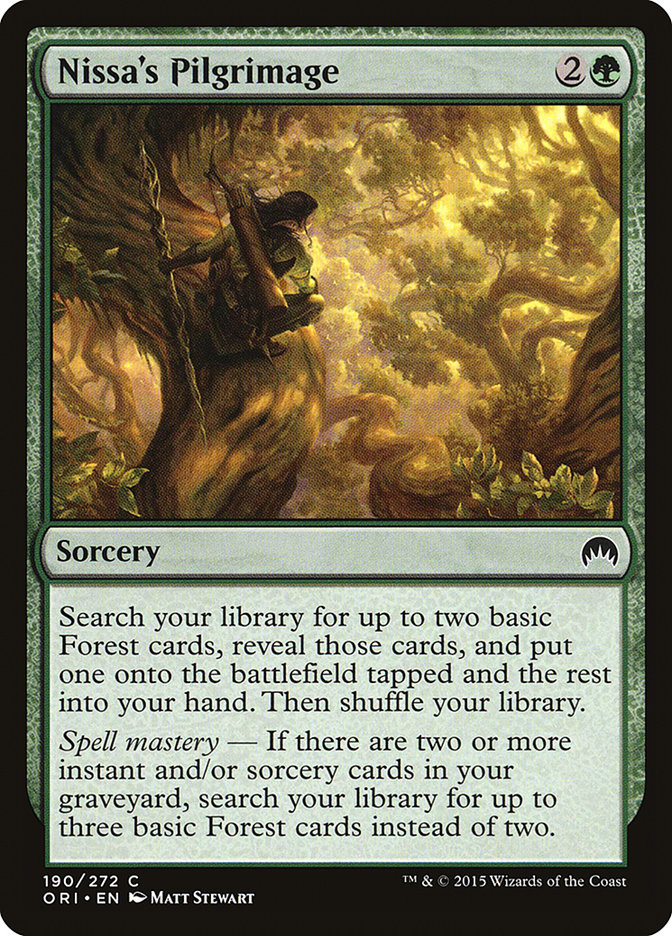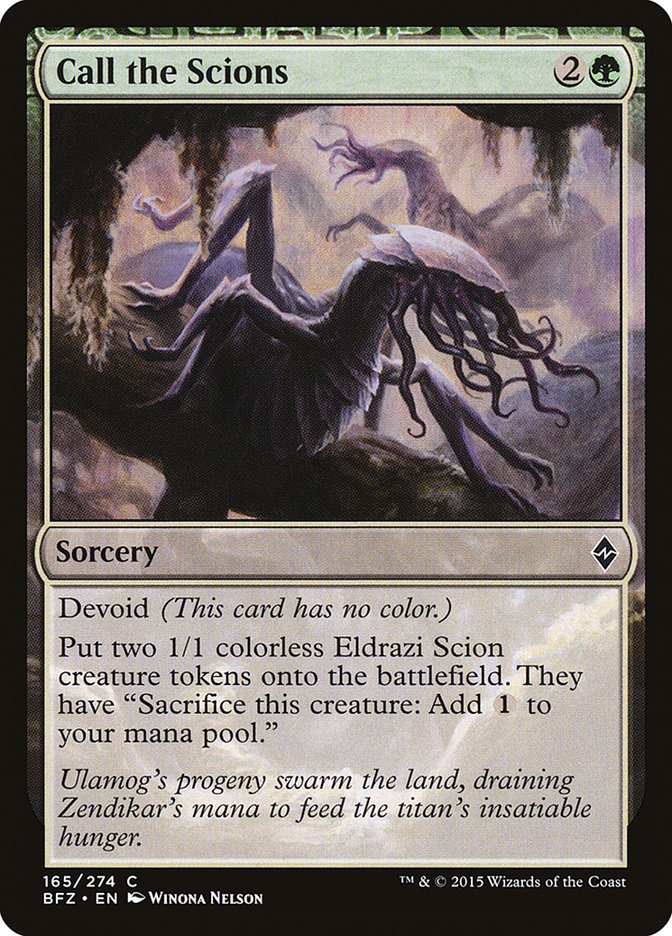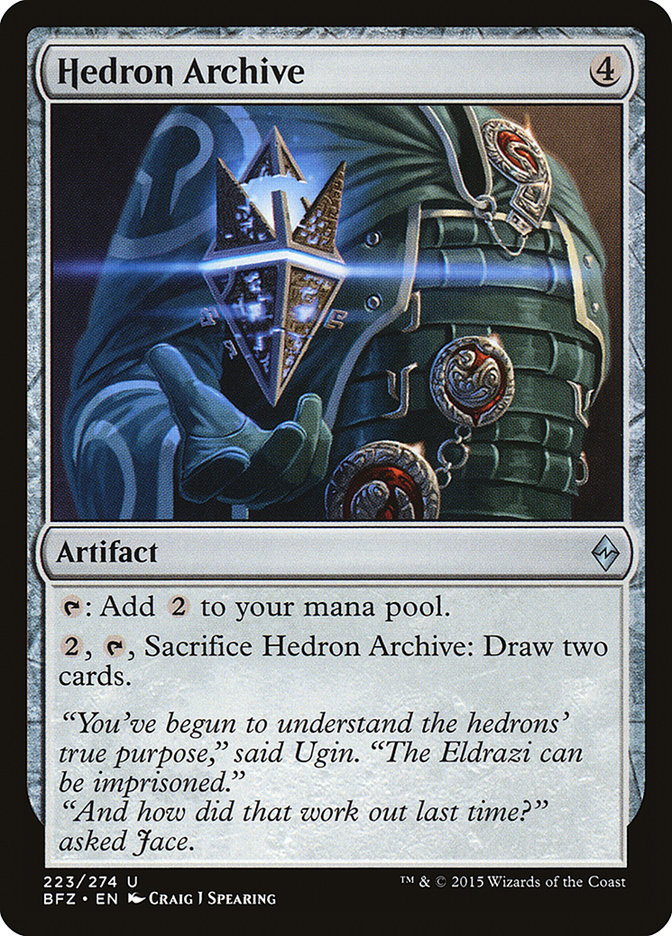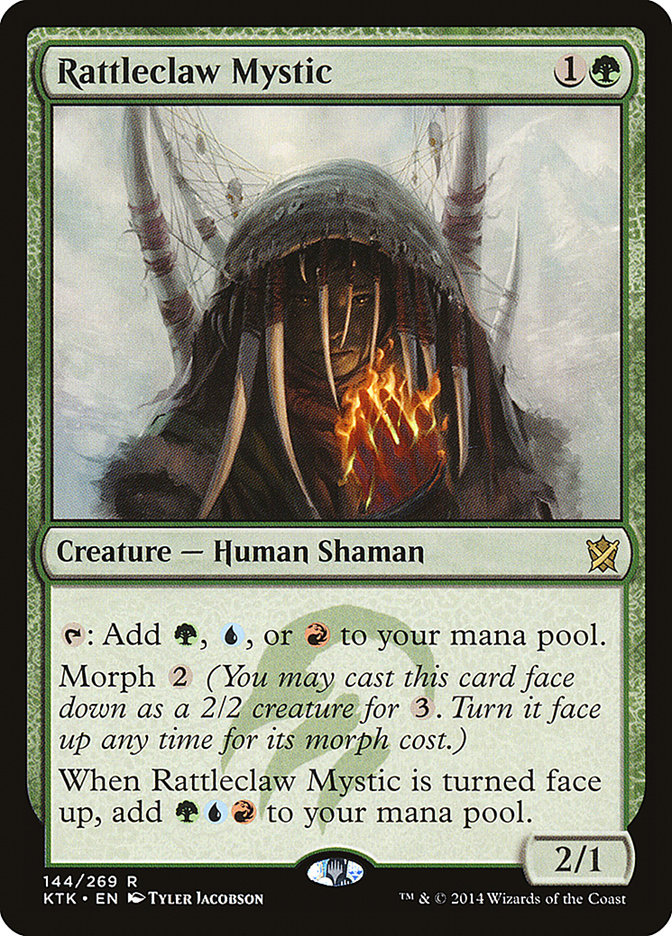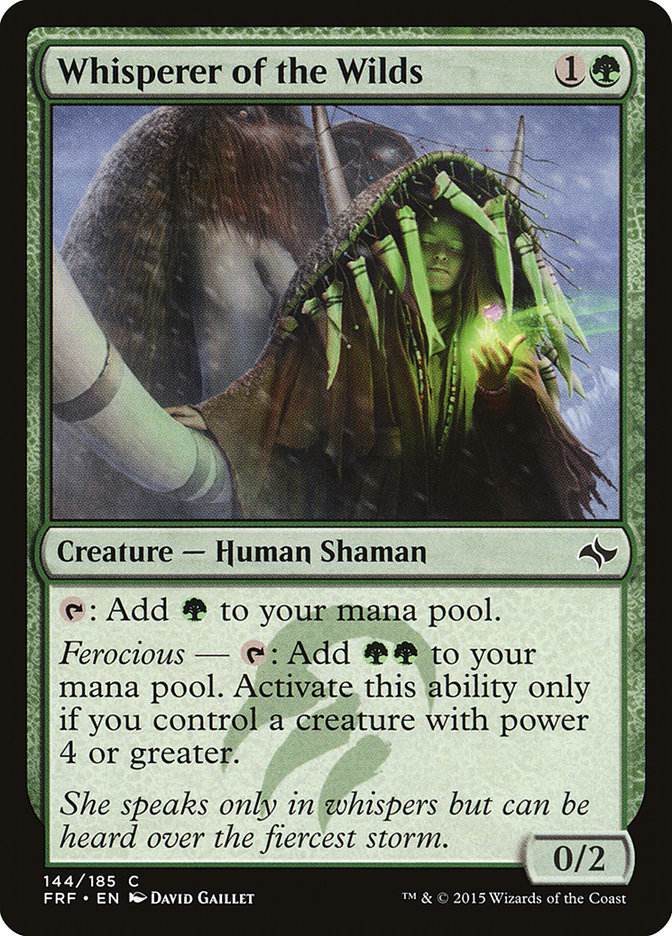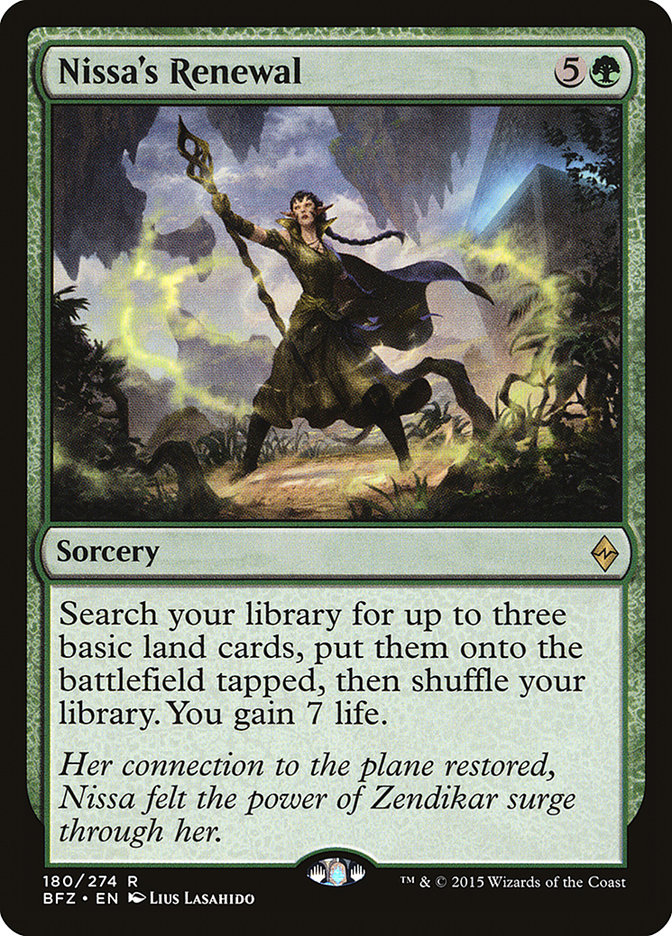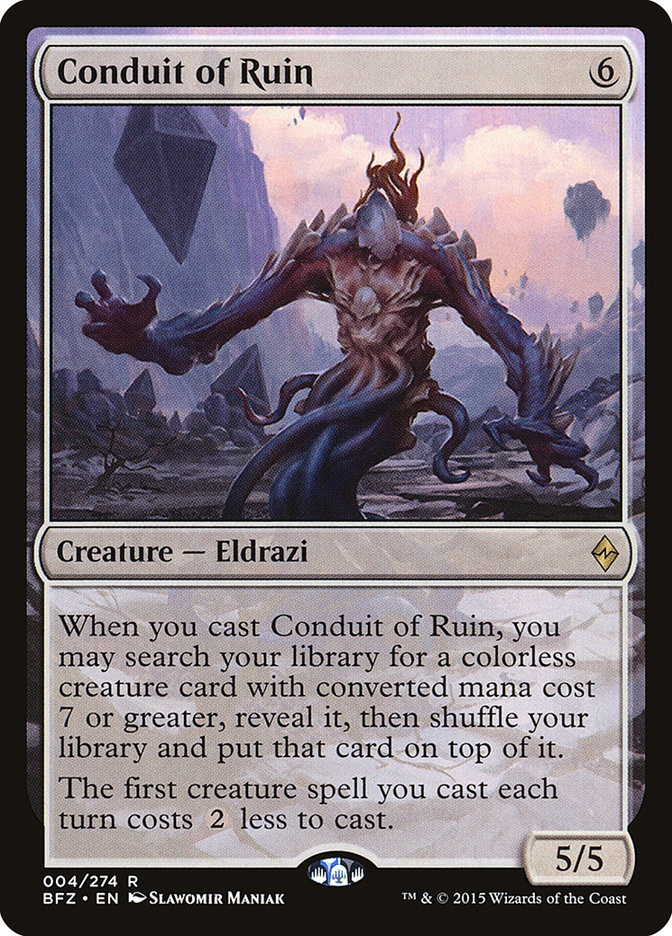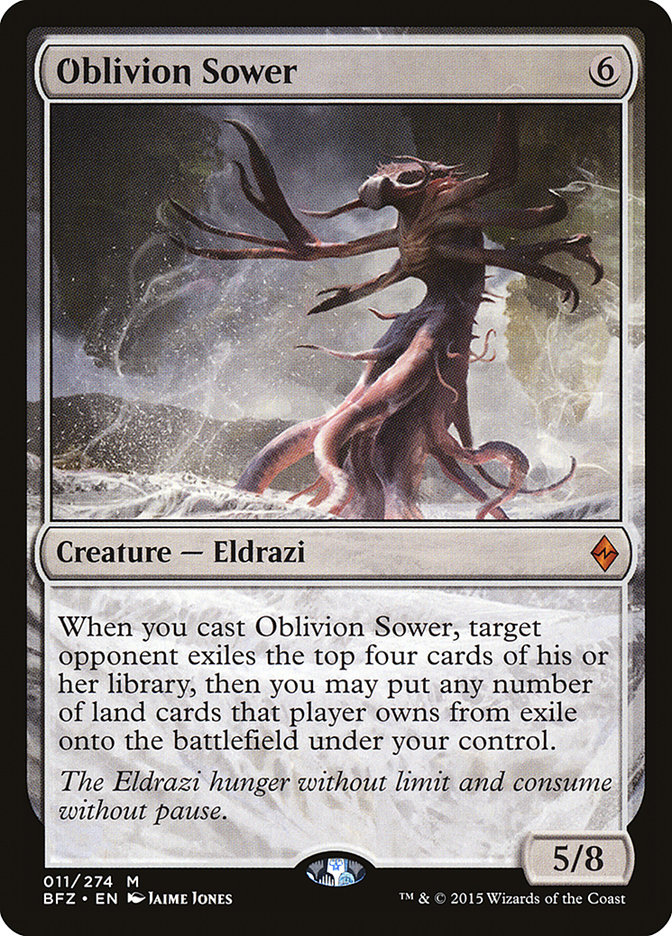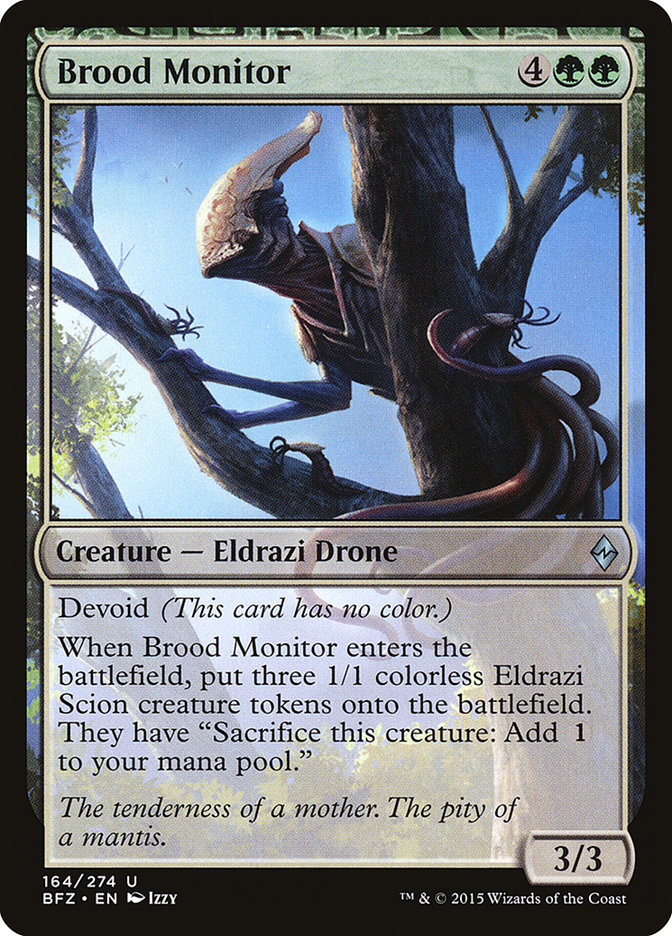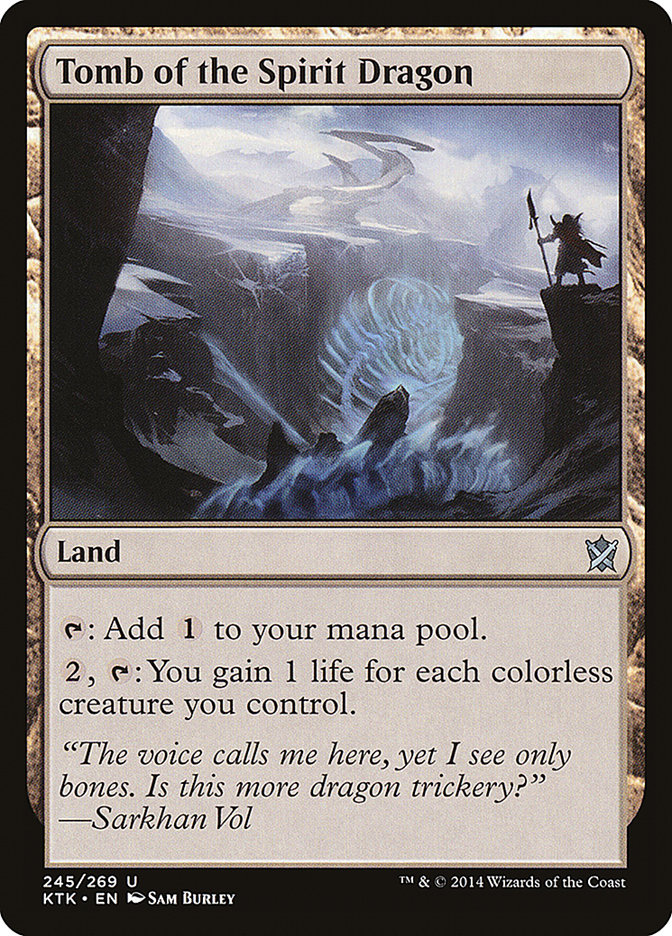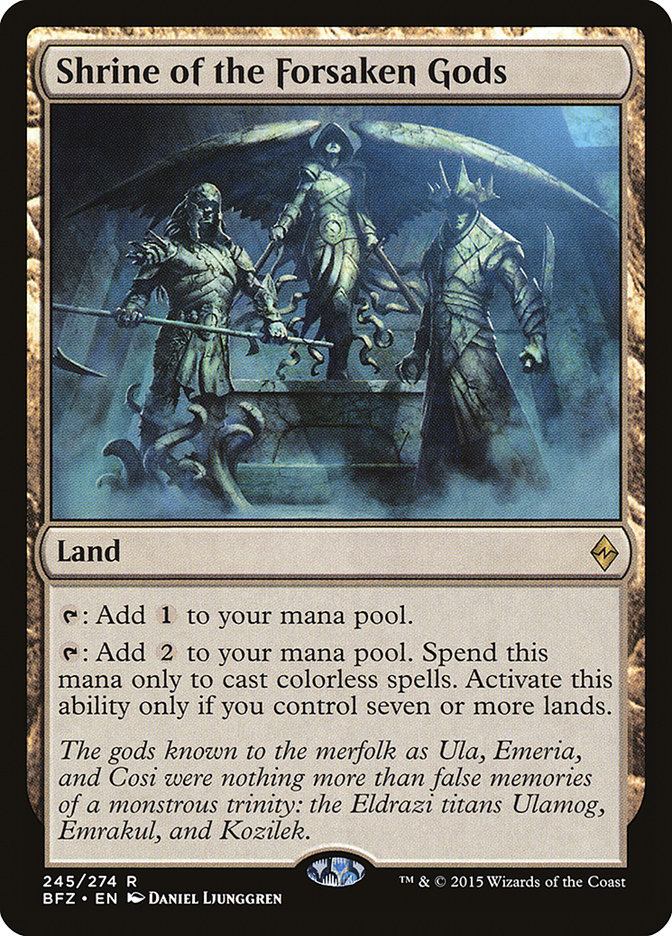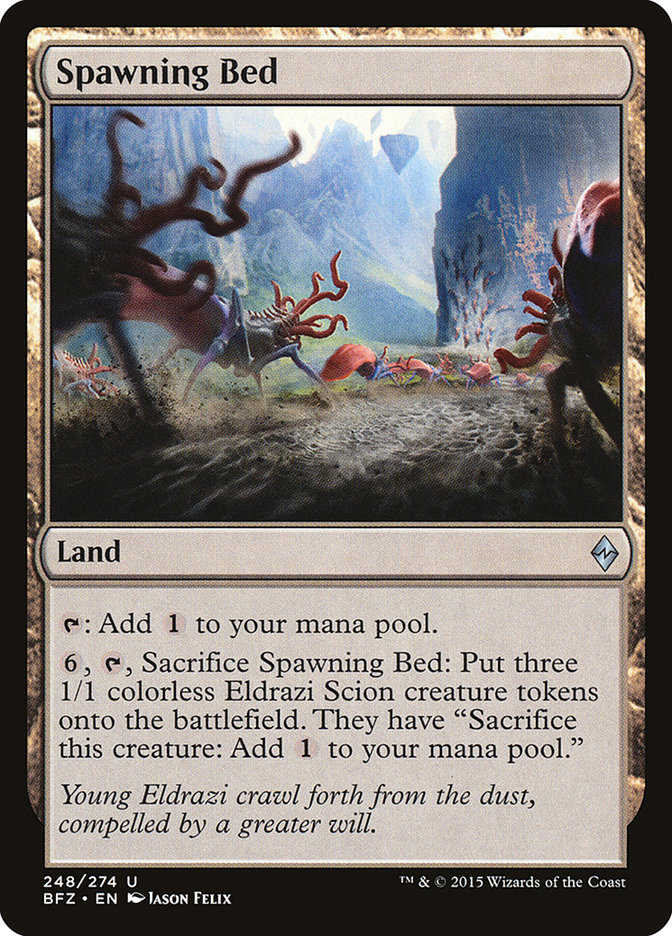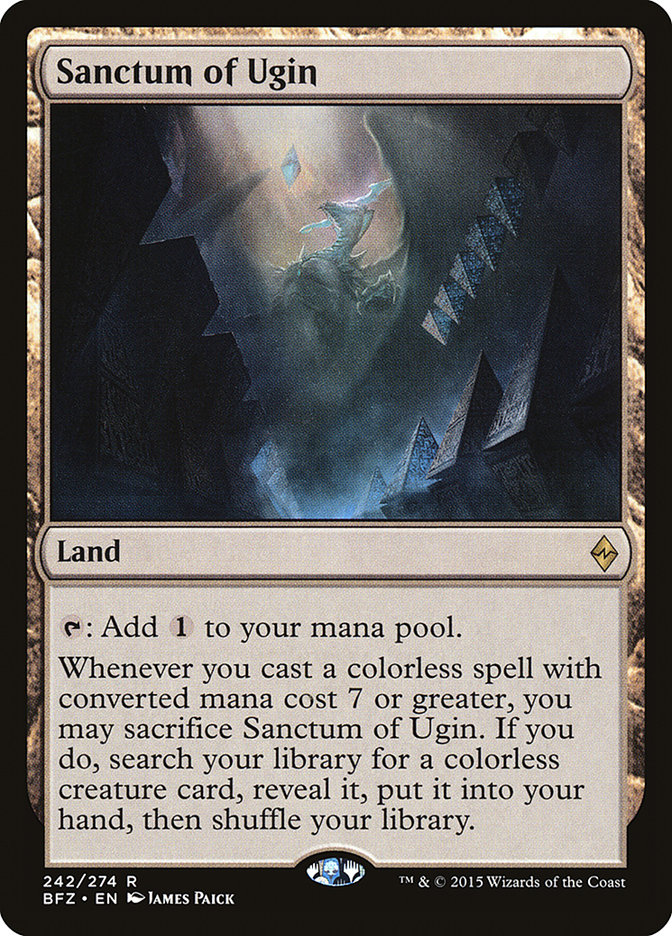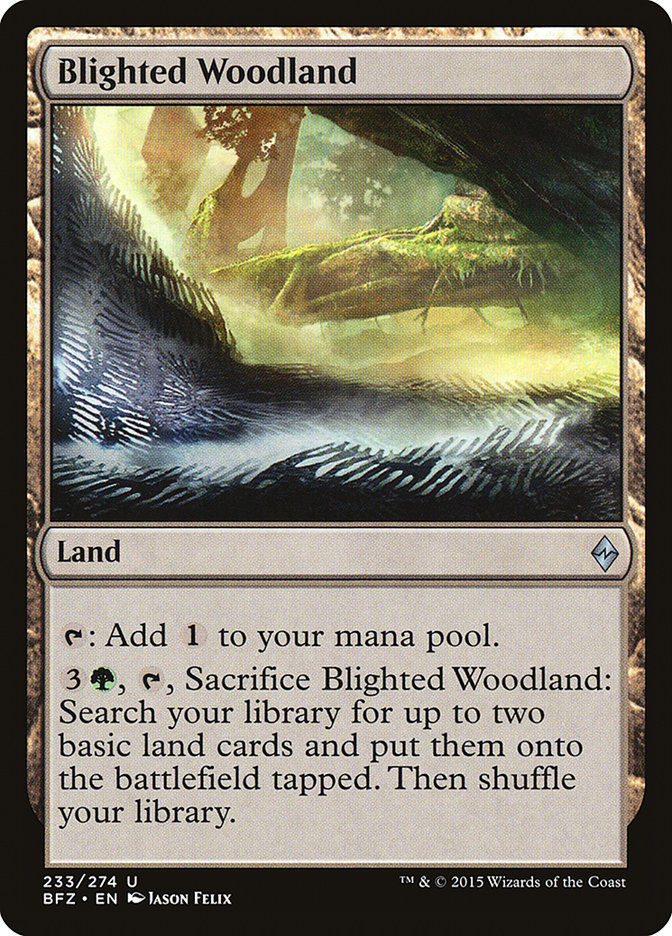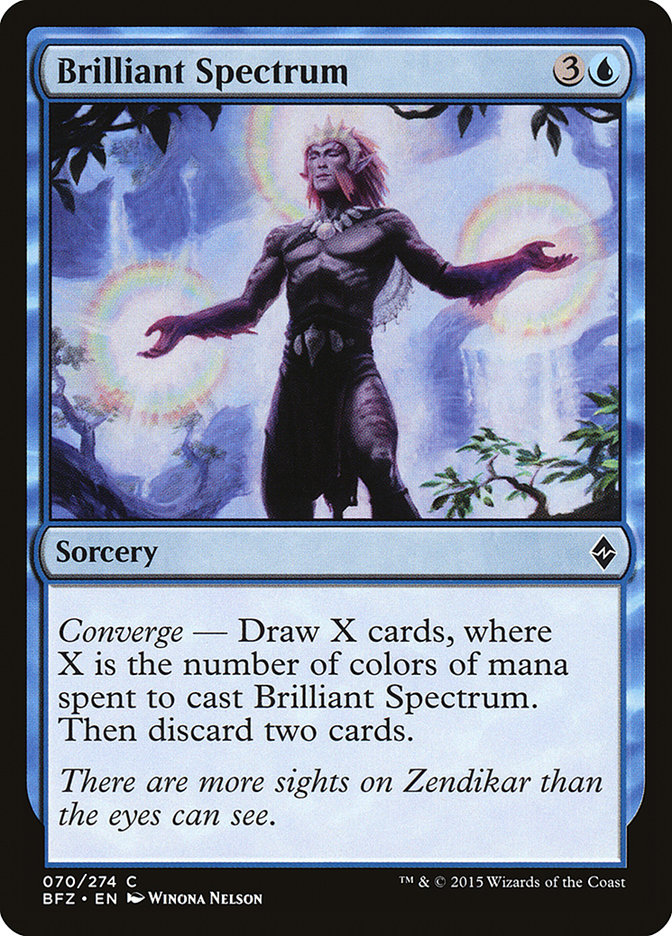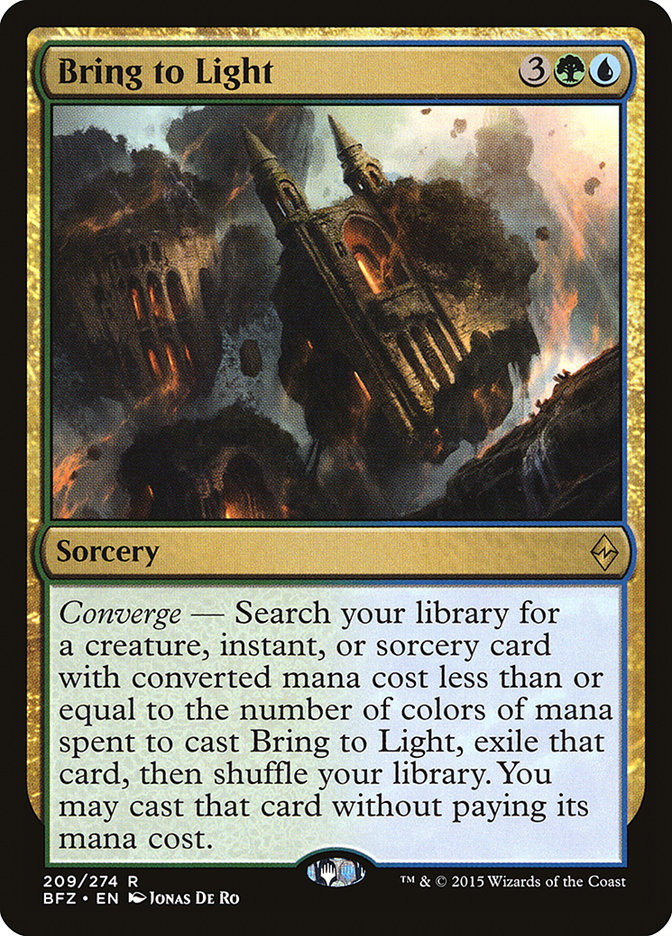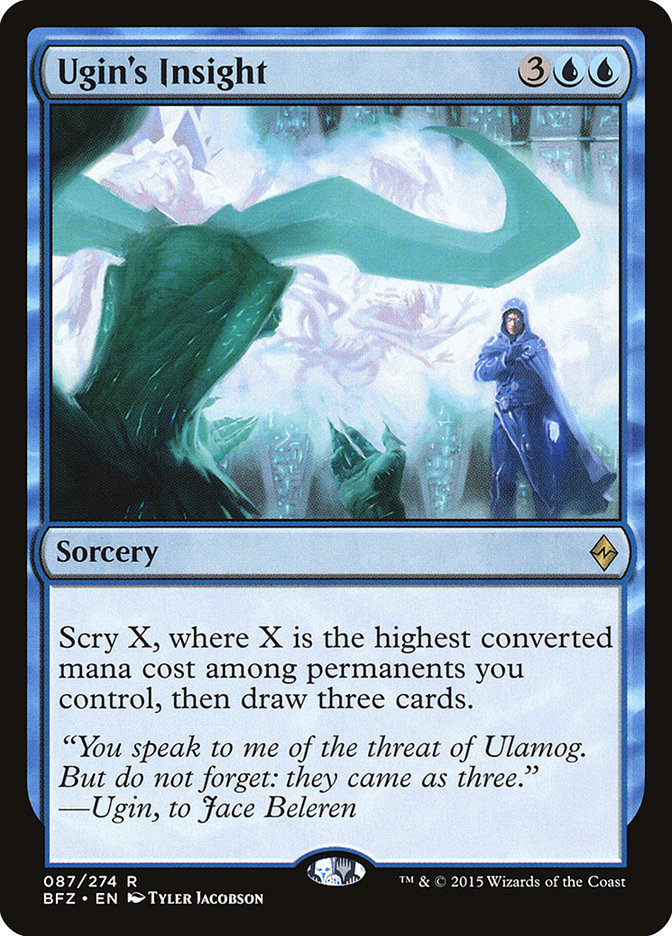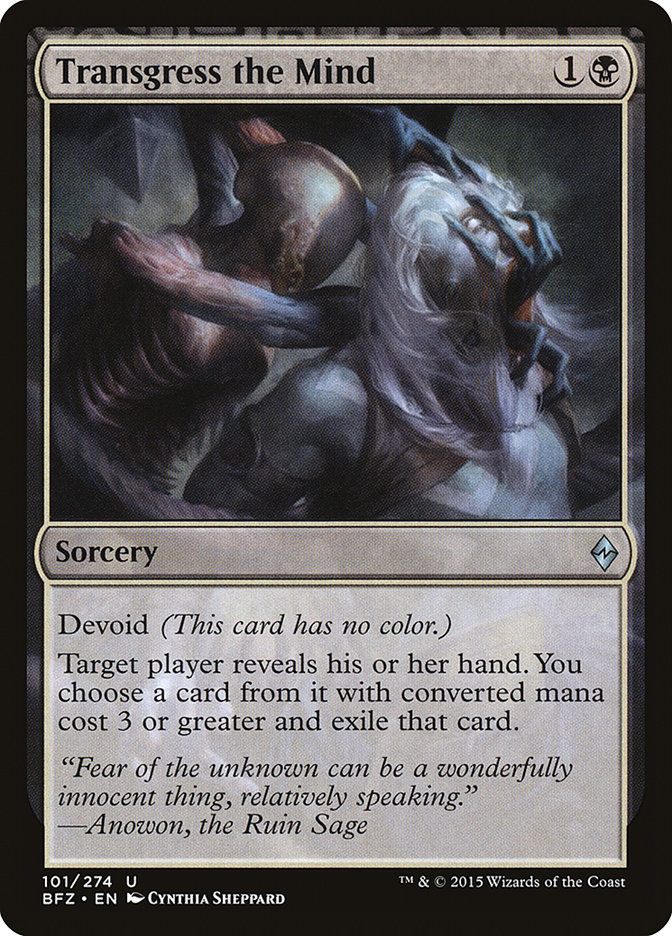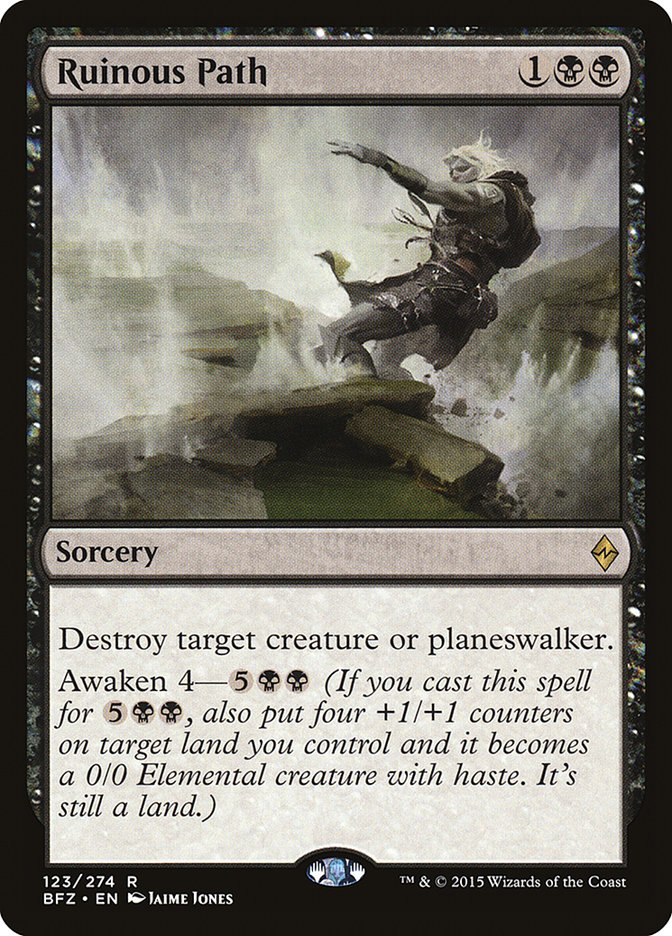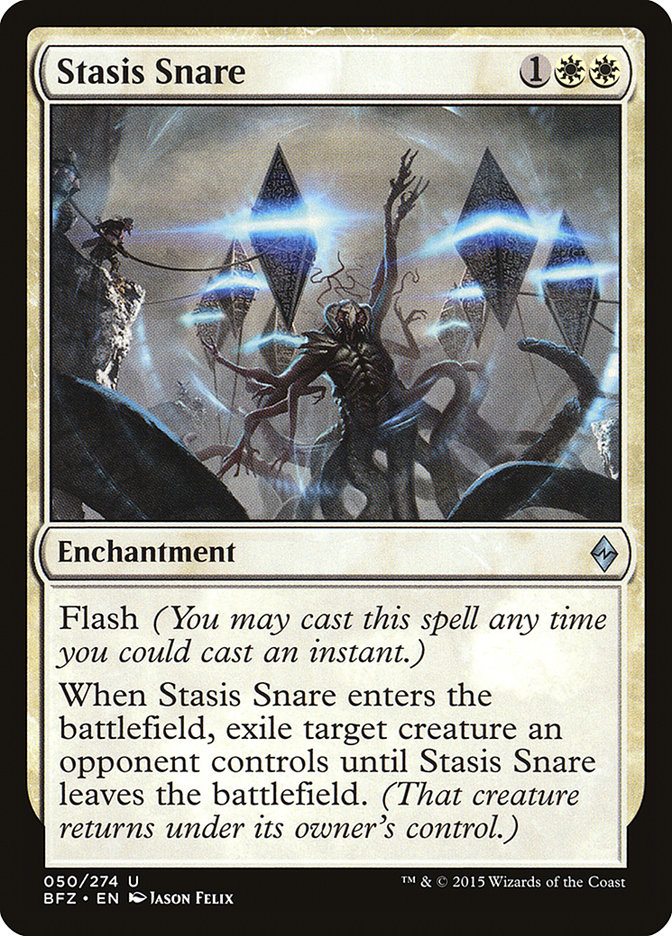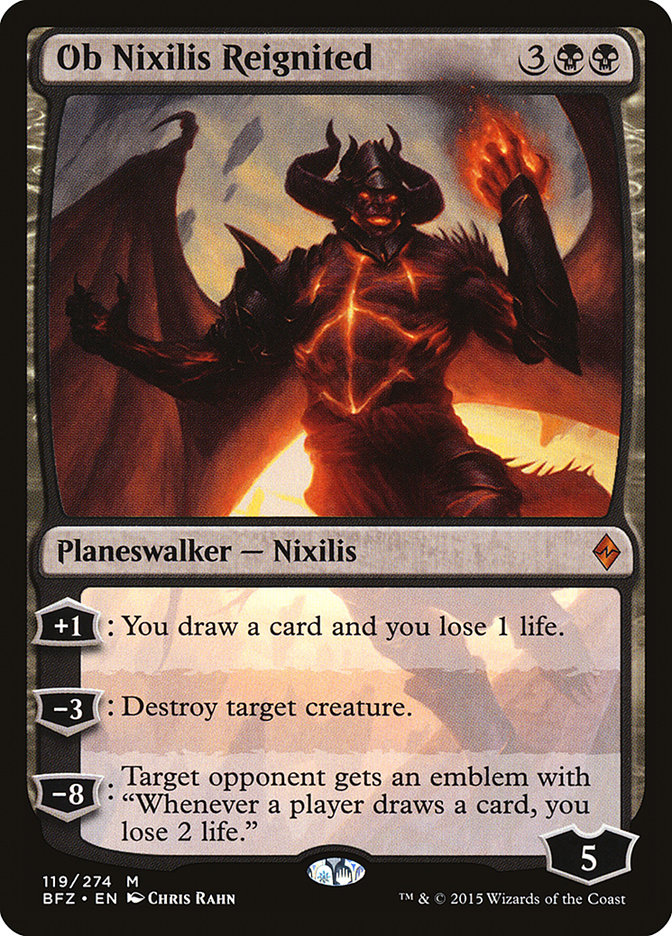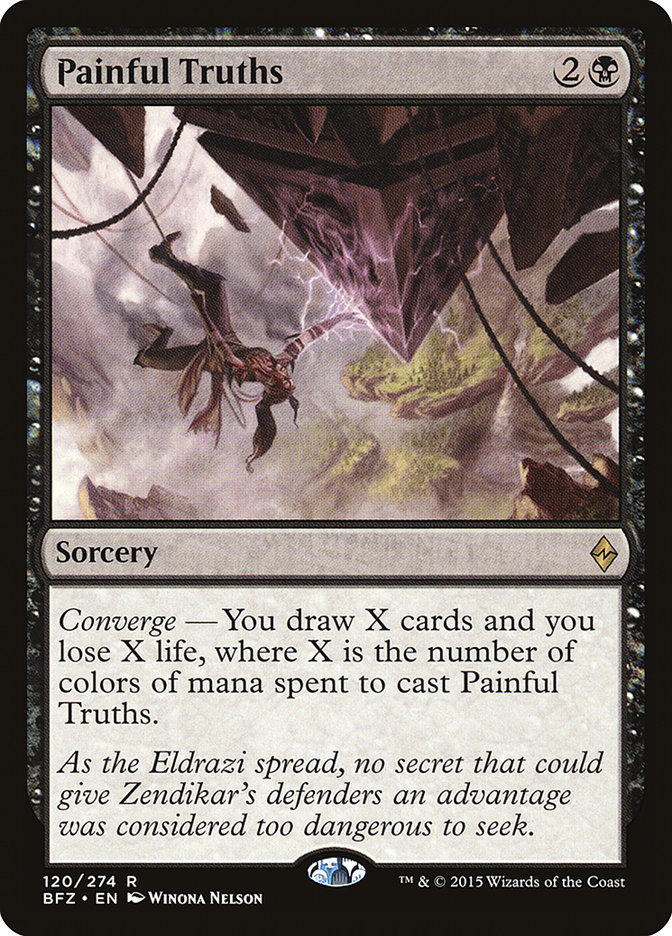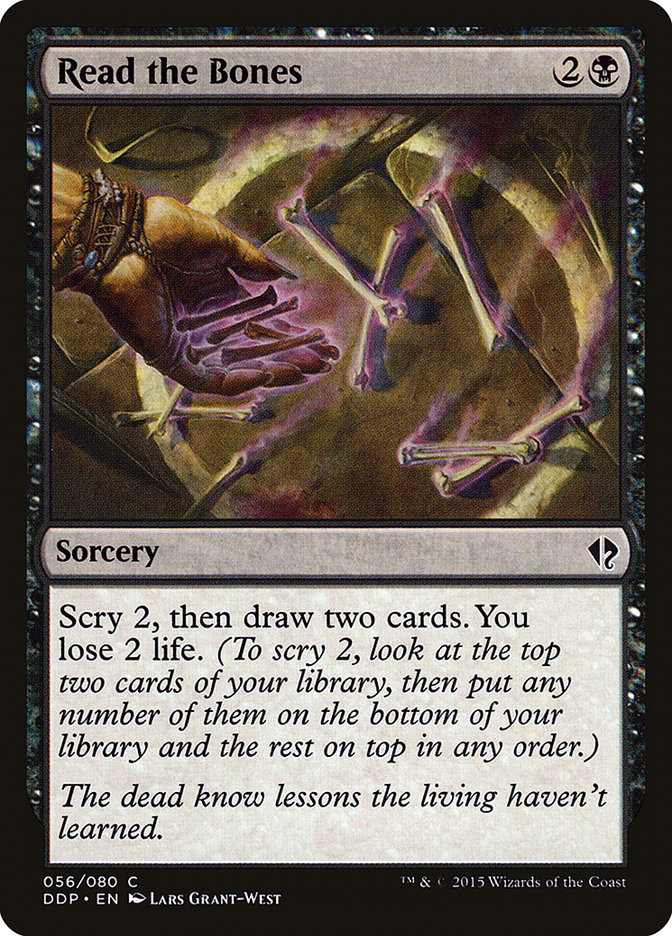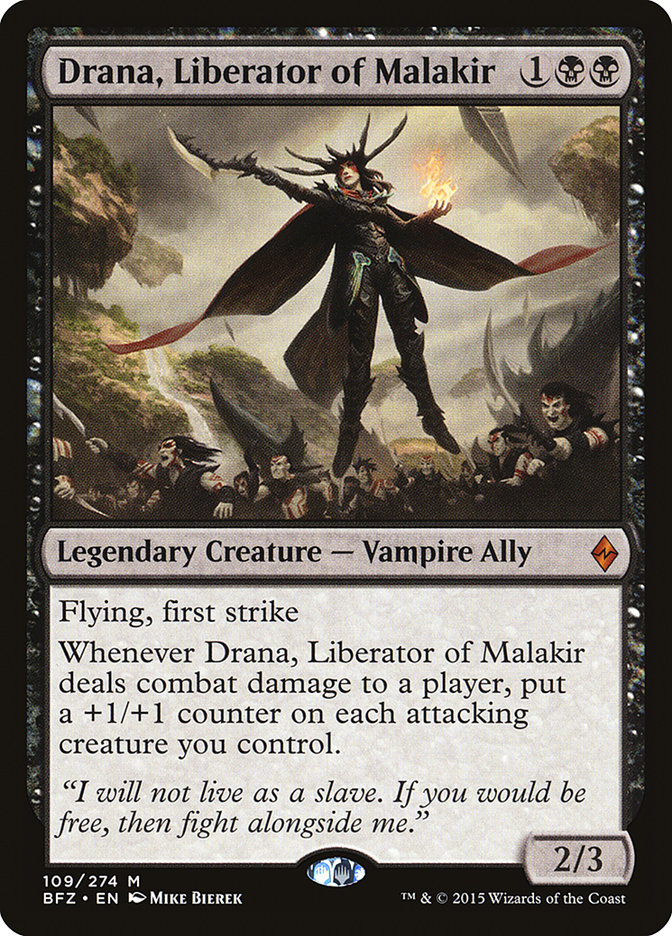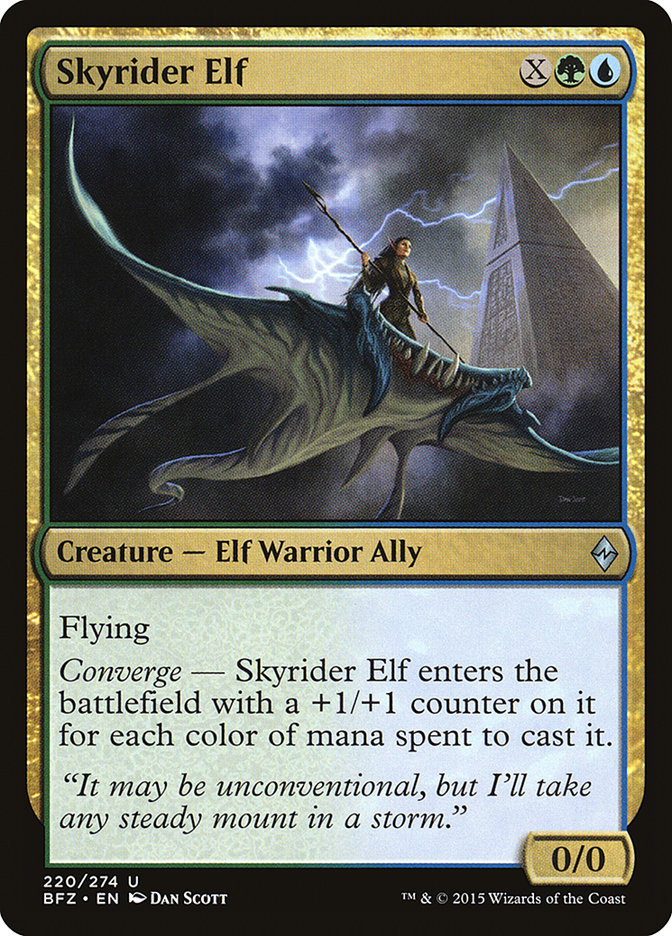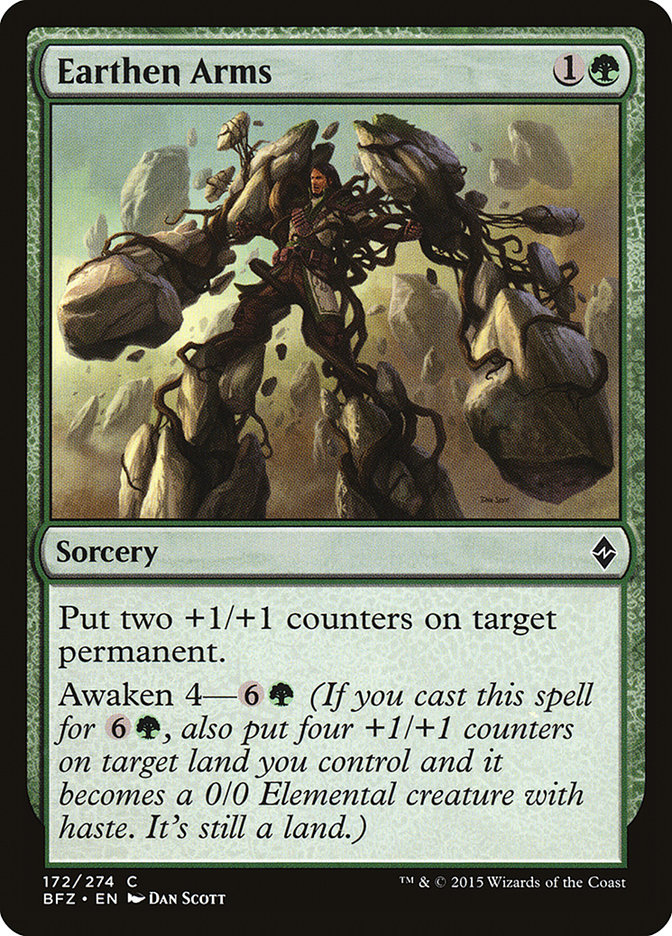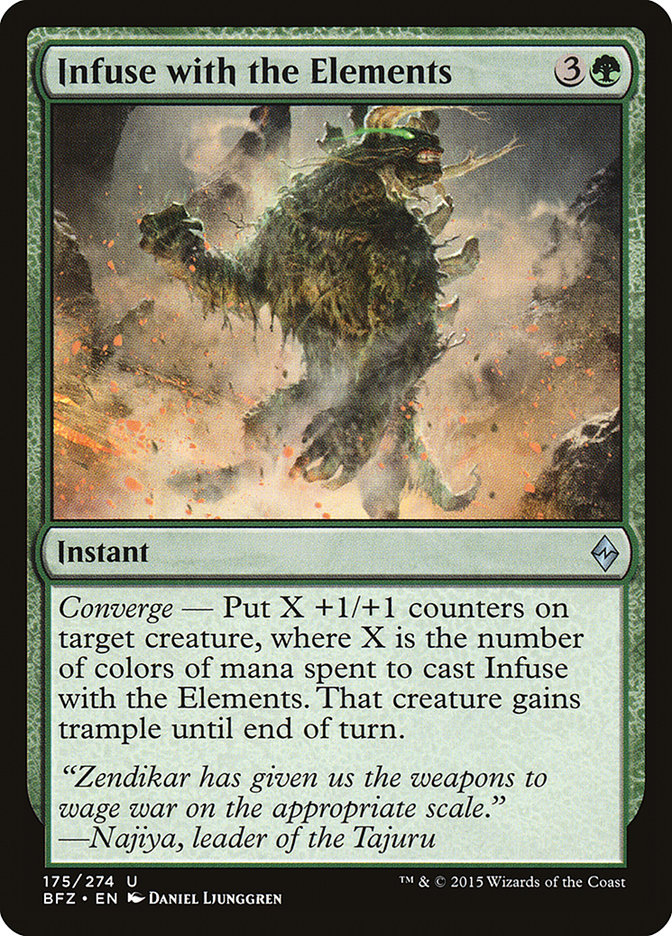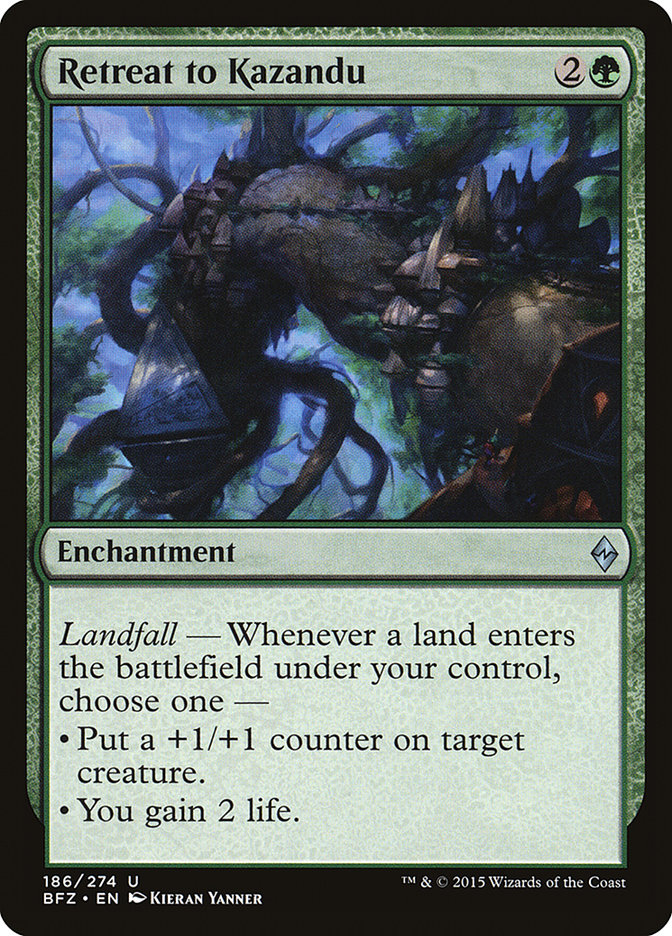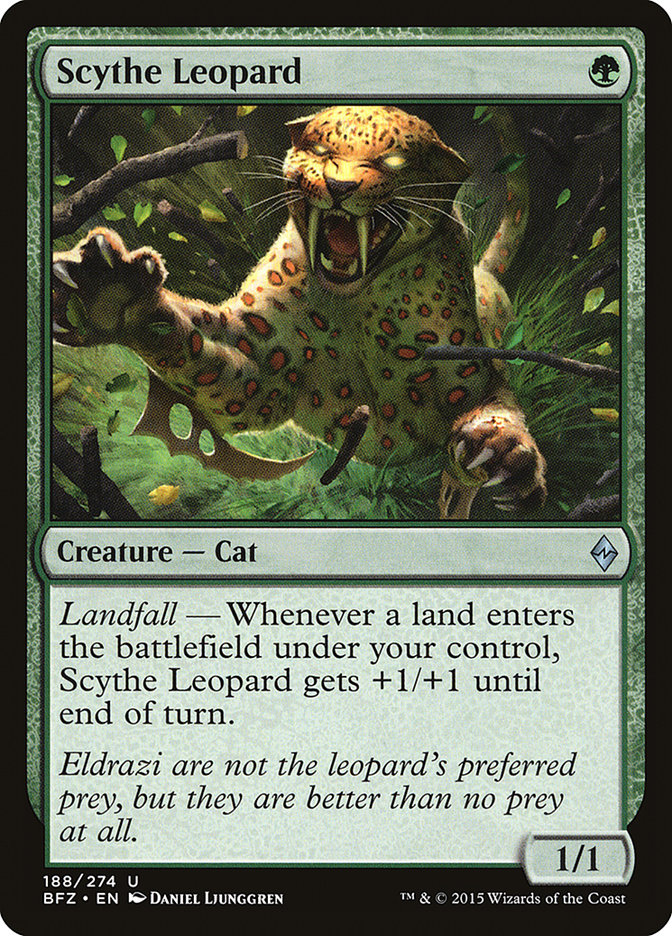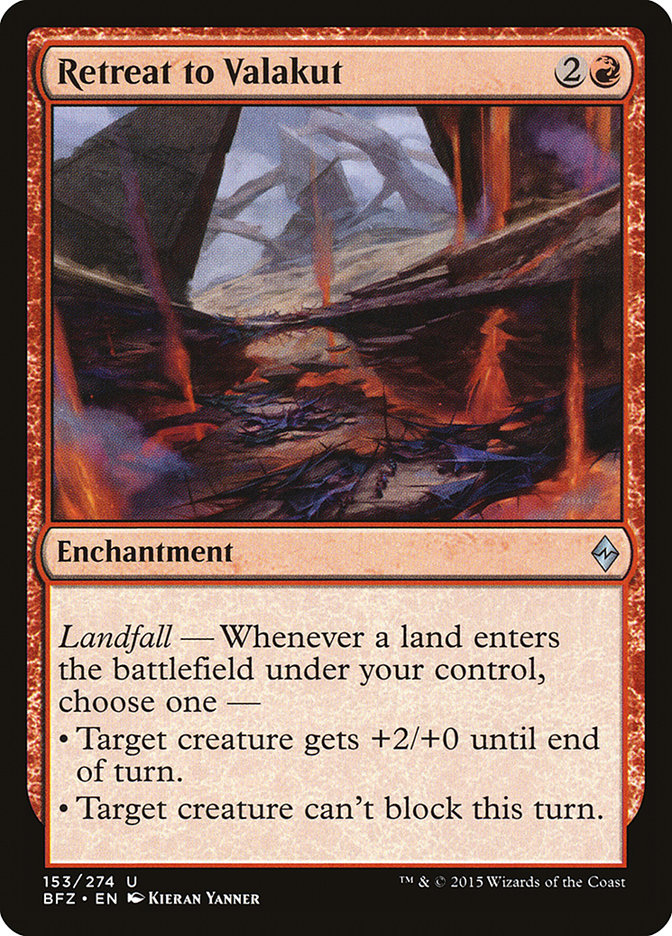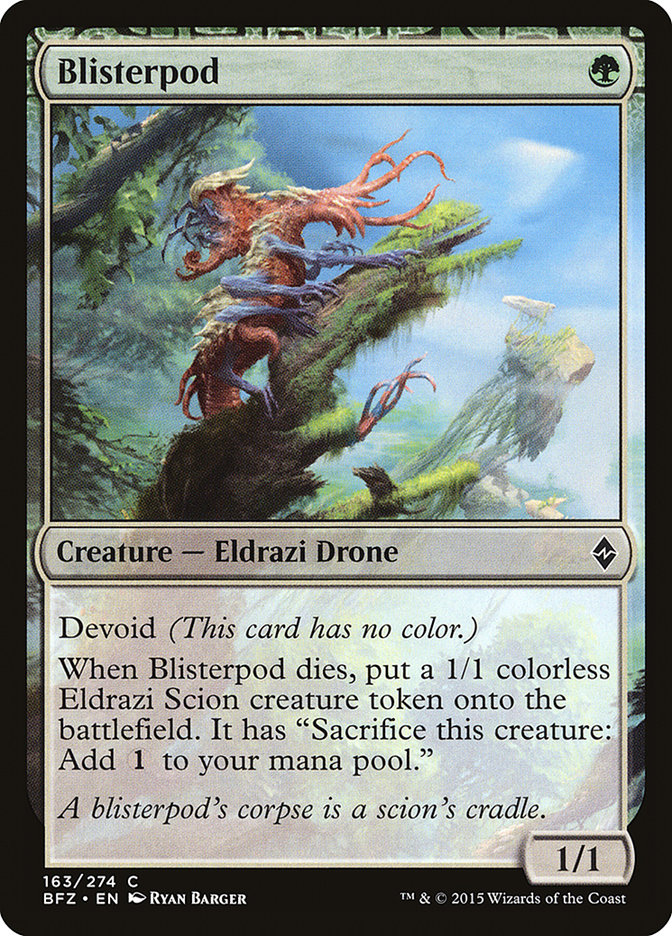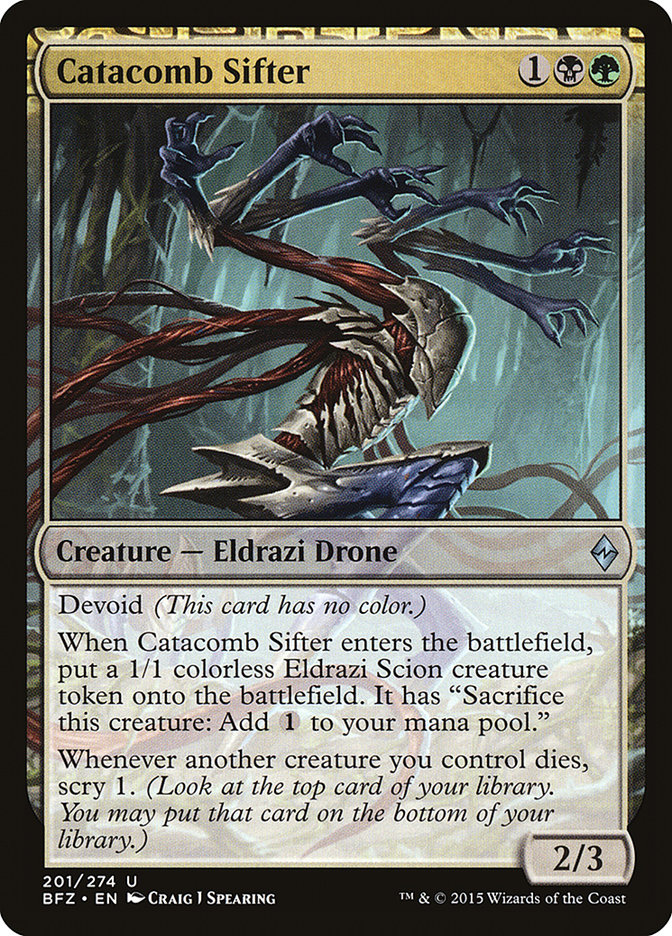Battle for Zendikar
has a lot of strange cards.
A lot of them require new approaches to deckbuilding.
But we’ve never been scared of a little brewing…
…
This week, we’re looking at the new format, figuring out how to actually use the cards of Battle for Zendikar effectively. Monday, we focused on the blue cards. Today, we tackle green!
One of the loudest new ways to build with green is to accelerate out Eldrazi (well, mainly just Ulamog… until Kozilek and Emrakul almost assuredly return
in three months).
There aren’t as many two-cost accelerants or ways to cheat the Eldrazi onto the battlefield as there used to be, but in terms of just casting Ulamog, the
new one seems like an upgrade (assuming you don’t need the reshuffle). Exiling two permanents instead of destroying one is huge. Exiling twenty cards
instead of annihilator 4 is probably a slight upgrade, in general (not even counting if you do crazy processor tricks). Costing ten instead of eleven is
night and day. Ulamog coming down a turn earlier can be game-winning. This is just a much stronger card than the old Ulamog to cast.
There are lots of ways to power out Ulamog. One of the most exciting is definitely this little number right here:
From Beyond would already be comparable to Awakening Zone if we were just paying an extra mana for the tokens to be 1/1s. However, we also have the option
to cash it in for the Eldrazi of our choice. While that’s often Ulamog, there are plenty of decks that might find themselves in a spot where they need to
sacrifice it on turn 5 to go get something like Catacomb Sifter just to buy some time, and having options is nice. In general, though, From Beyond is a
one-card combo that will eventually make enough mana for us to go find and cast Ulamog.
Creatures (17)
- 4 Rattleclaw Mystic
- 4 Whisperer of the Wilds
- 1 Nissa, Vastwood Seer
- 4 Hangarback Walker
- 4 Ulamog, the Ceaseless Hunger
Planeswalkers (4)
Lands (25)
Spells (14)
Sideboard

This list is extremely ramp-oriented, with a full 48 of its cards finding or making mana. In fact, 28 of them are capable of making multiple mana!
Nissa’s Pilgrimage is particularly nice in matchups where our two-drop mana accelerants don’t always live so that we don’t waste our third turn. It’s
possible that we’re supposed to play some number of Fertile Thickets in some builds for even greater mana consistency, but we don’t really need double
green in this version, so its ability to find a Forest is mostly wasted here.
Natural Connection is sort of in this uncanny valley between being a big-mana accelerator and a landfall enabler. Since we’re not taking advantage of the
fixing or the instant speed landfall goodness, it’s wasted here. Finding a home for it in Constructed is likely going to be harder than it looks since it
does a lot of different things, but they’re all mediocre.
Most cards that put us two ahead on mana cost four. I love this card since it does it for just three. It’s also versatile, potentially providing two chump
blocks. However, the mana it produces isn’t permanent, so it’s much better for ramping into cards that cost six than cards that cost ten.
Hedron Archive is great regardless of whether we need mana or not. Early on, it puts us two turns ahead of schedule for casting Ulamog. If we’re flooding a
little, we can cash it in for two more cards to look for business. The only disappointing part is that Hedron Archive doesn’t play as nicely with Shrine of
the Forsaken Gods as we’d like, at least when it comes to casting Ulamog.
I had considered Explosive Vegetation to actually get up to six lands on the battlefield faster, but Hedron Archive’s card draw ability is just too
attractive. As if that wasn’t enough, Hedron Archive can be used the turn you play it. That might mean a turn 4 Hangarback Walker for one. A turn 3 Nissa’s
Pilgrimage can be followed by a Hedron Archive and another Pilgrimage.

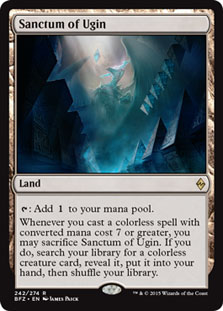
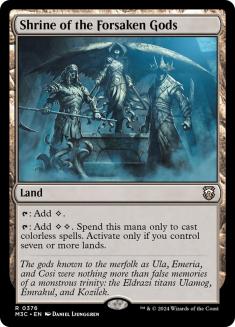

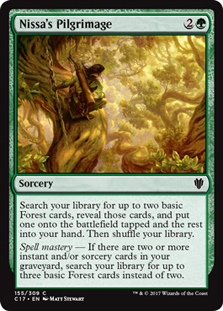

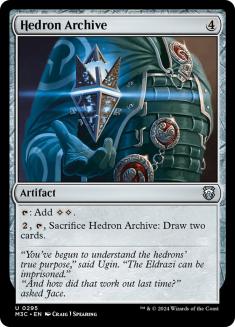
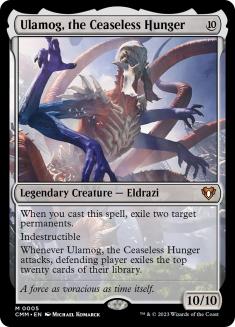

This opening hand already has everything it needs for a turn 5 Ulamog…
…and any land in the first six turns means we can find and cast another Ulamog the very next turn!
The most realistic options for two-mana ramp are mana accelerants, and if we wanted, we could also play Leaf Gilder. I went with Whisperer of the Wilds
because of the possibility of casting a 4/4 Hangarback Walker with Sanctum of Ugin. We can sacrifice the Sanctum to go find Ulamog, and the Whisperer will
make an extra mana next turn to make up for the Sanctum being gone.
Rattleclaw Mystic is a strict upgrade to Leaf Gilder, of course, but it’s also nice to morph and then get an extra mana out of the following turn. It also
makes it easier to get away with just fourteen Forests since we can totally keep hands of all colorless mana when we have a Rattleclaw.
This list is light on six-cost acceleration (which is a funny concept in itself) since it plans on curving straight into seven with Hedron Archive, then
activating Spawning Bed to go straight into Ulamog. That said, Nissa’s Renewal giving us some actual lifegain can be crucial against burn. I like it as a
sideboard card anyway, so putting a couple in the maindeck saves us a little sideboard space. Some Eldrazi decks can use Feed the Clan, but my build is
short on ferocious enablers.
Conduit of Ruin is a totally reasonable option, as it can be a passable accelerator, a passable threat (finding Ulamog a turn later), and a passable body
to defend ourselves with. The only thing that makes me nervous with it is the annoying play of finding Ulamog, then the Conduit dying and us being short on
mana. If we were to play with a greater variety of Eldrazi, the toolbox aspect starts becoming more attractive, particularly since the ability is
uncounterable.
Oblivion Sower’s acceleration may not be reliable, but it is uncounterable. It’s also a mondo-combo with Crumble to Dust! The biggest risk to Oblivion
Sower is that even if you hit lands off of your opponent’s deck, there’s a good chance they are fetchlands. If you don’t have targets for all of the
fetchlands, you might end up looking foolish.
This one isn’t all that strong, but it does put us straight into Ulamog while also adding four color bodies to the battlefield, in case we are some kind of
a weird token/Eldrazi deck. It does work nicely with Tomb of the Spirit Dragon, though.
Tomb of the Spirit Dragon is an excellent option for Eldrazi decks, helping buy us time agafinst fliers and burn. It’s especially hot with From Beyond,
Hangarback Walker, and Spawning Bed, but even just gaining a little bit of life here and there from morphs or Ulamog itself can be invaluable.
I love Shrine of the Forsaken Gods, but it isn’t at full power when we have this many non-land accelerants. Still, the ability to play Ugin a turn early,
and by surprise, is tremendous. In general, though, it’s just a very powerful card.
We might want Mage-Ring Network for even more extra mana out of our lands, but I’m hoping that we’re curving out and using all of our mana every turn.
Spawning Bed is a nice compromise, as it can get us to Ugin two turns early, but it can also buy us time to draw something (with blockers) or give us an
alternative threat against opponents with a lot of spot removal.
I’m a lot less sure on this one than the other colorless lands in this list. Sanctum of Ugin helps ensure that we can actually power through a removal
heavy deck (with the first Ulamog finding a second), but it also helps jump start us in the first place. Cast a 4/4 Hangarback Walker or bigger and you’re
rolling. That said, you have to have a lot going on before it does anything. It also puts you down a land, so I could easily imagine it being replaced.
Adding colors to an Eldrazi Green deck is easy, particularly if you want to add red or white.
Creatures (20)
- 4 Rattleclaw Mystic
- 4 Whisperer of the Wilds
- 4 Dragonlord Atarka
- 4 Hangarback Walker
- 4 Ulamog, the Ceaseless Hunger
Lands (25)
Spells (15)
Sideboard

Once we add Dragonlord Atarka to the mix, we’re starting to talk about enough bodies to make Nissa’s Revelation kind of an exciting proposition. It might
be that we’re just still supposed to play with some Ugins, or it might be that this is too many expensive cards anyway. Nevertheless, it’s worth trying.
Another possibility is to move more towards See the Unwritten, but I generally like that path better when we have mid-size Eldrazi like Blight Herder,
Conduit of Ruin, or Oblivion Sower to enable the ferocious.
Blighted Woodland is yet another land capable of making multiple mana, with the upside of fixing our colors. The right mix of lands is going to vary
dramatically from one Eldrazi deck to another. For instance, how many basics does your build actually play to search up?
One of the most appealing reasons to play red is to support Radiant Flames, which then encourages us to play at least one land that makes a third color
(even though Rattleclaw Mystic already gives us access to blue). Of course, if we wanted, we could go a little harder on the third color.
Creatures (22)
- 4 Rattleclaw Mystic
- 4 Whisperer of the Wilds
- 4 Dragonlord Atarka
- 3 Dragonlord Dromoka
- 4 Hangarback Walker
- 3 Ulamog, the Ceaseless Hunger
Lands (25)
Spells (13)
Sideboard

Ulamog is a very powerful permanent, and while we’re typically going to want that cast trigger to exile permanents with, it is interesting that unlike the
old Ulamog, you can reanimate this one.
Creatures (10)
Lands (26)
Spells (24)

There are plenty of options for how to discard our Dragonlord Atarka or Ulamog, including Brilliant Spectrum, which does a passable Careful Consideration
impression.
We don’t want too many of our loot effects to be expensive, but it does curve perfect into five-cost reanimation spells like Fearsome Awakening and
Necromantic Summons, letting us play a weird sort of Solar Flare game of years past. Interestingly, if we splashed the fifth color, we could use Bring to
Light as reanimation spells 3, 4, 5, and 6.
Of course, once we are playing Bring to Light, a lot of possibilities open up before us:
Creatures (9)
Planeswalkers (1)
Lands (27)
Spells (23)

Bring to Light is an exceptional card if you build around it. It’s often, functionally a zero mana Demonic Tutor since you get to play your five-cost card
for free. It doesn’t work well with converge, but that’s not the end of the world. Just being able to find a sweeper, a card draw spell, and a big threat
is powerful toolbox, so we don’t need to end up too over-stuffed with fives.
Ugin’s Insight makes an ideal card draw target for Bring to Light, giving us not only three cards but a whole lot of dig when we have a Siege Rhino on the
table. Nevertheless, it is often right to cast it even when we aren’t going to get to scry, so we shouldn’t be afraid of making that play.
It’s interesting that while Bring to Light strongly demands you play five colors, other converge cards of other costs take you down very different paths.
For instance, Woodland Wanderer decks need only be four colors, and a Woodland Wanderer deck without red is going to play a lot differently than a Woodland
Wanderer deck without black. For instance:
Creatures (26)
- 4 Rattleclaw Mystic
- 4 Mantis Rider
- 4 Savage Knuckleblade
- 1 Dragonlord Atarka
- 4 Thunderbreak Regent
- 2 Dragonlord Dromoka
- 3 Dragonlord Ojutai
- 4 Woodland Wanderer
Lands (24)
Spells (10)

While this build looks too slow to me, the idea has some merit, which is just filling your deck with amazing creatures that can each dominate if left
unchecked. How many removal spells is your opponent hoping to draw?
If you replace the red with black, you end up with a radically different experience:
Creatures (19)
- 4 Siege Rhino
- 1 Dragonlord Silumgar
- 1 Dragonlord Dromoka
- 1 Dragonlord Ojutai
- 4 Jace, Vryn's Prodigy
- 4 Hangarback Walker
- 4 Woodland Wanderer
Lands (27)
Spells (14)

I generally like Blighted Fen, but it’s not great with Woodland Wanderer. Still, we do get a lot of action out of our lands from the creature-lands.
I have warmed up to Transgress the Mind a little. It might not cost one, but it doesn’t cost life either. That it also exiles the card is kind of a nice
bonus sometimes. I like counterspells in this format, but they have a serious weakness against some of the Eldrazi cards. Transgress the Mind is
particularly great in those spots. Really though, I just want a way to clear the path for the fatties, and Transgress the Mind is a more reliable maindeck
than Duress.
Transgress the Mind is even more important in Abzan Midrange, which needs something to fill the void left by Thoughtseize.
Creatures (16)
Planeswalkers (4)
Lands (27)
Spells (13)

We might not be able to get away with playing this many copies of Transgress the Mind since we are going to draw multiple tapped lands a reasonable
percentage of the time. The real challenge is figuring out what two-cost removal we can actually maindeck. Reave Soul? Ultimate Price? Valorous Stance?
Silkwrap? Self-Inflicted Wound? Righteous Surge? Swift Reckoning?
I do like Ruinous Path, but this one is not the open-shut case I think a lot of people are assuming. Being an instant is great, and Stasis Snare exiling is
particularly strong against Hangarback Walker, Deathmist Raptor, and Ulamog, the Ceaseless Hunger. It does leave you more vulnerable to Dromoka’s Command
and planeswalkers, but depending on the metagame, it might be worth it. It’s also double white instead of double black, which might be important in a build
of Abzan that tries to avoid double black cards like Ruinous Path, Languish, and Ob Nixilis, instead focusing more on white cards like Knight of the White
Orchid, Gideon, Wingmate Roc, and Tragic Arrogance.
I’m a fan of both of these planeswalkers. Gideon is discussed at lengthhere. Ob Nixilis Reignited is discussed at length here. In Abzan specifically, Gideon is good for grinding and attacking
planeswalkers, and the emblem is a combo with Hangarback Walker sometimes. Ob Nixilis isn’t quite as efficient of a card; however, it does what you
actually want. If they have a creature, you kill it and are happy. If they don’t, you draw a card and are happy. It is vulnerable to swarms, but Hangarback
Walker, Languish, and Gideon all help there.
Greenwarden of Murasa gives us even more Den Protector grinding, going long. We’re typically going to be willing to let it get exiled for a free Regrowth;
however, there are going to be times where it is right to not use the ability (which is legal), so that you can loop it with Den Protector, or even
Mortuary Mire.
These two are a lot alike, but there are some key differences in where to use them. I think Painful Truths is a slightly stronger card; however, you might
want the more conservative Read the Bones maindeck (for decks that want this kind of effect). Game 1, you have some cards that are good, some less good;
Read the Bones helps find the good ones. It’s also a lower life payment against aggro, while digging harder to your Languish. Read the Bones can also be
played on turn 3 much more easily than Painful Truths.
After sideboard, however, you are generally bringing in Painful Truths against decks that aren’t really punishing your life total very much. Besides, all
of your cards tend to be good after sideboard, and the sideboarded Abzan matches can be very attrition-based.
Painful Truths may look like an Abzan card on the surface, but there are other color combinations that appreciate it more, such as Jund, which doesn’t have
access to Abzan Charm.
Creatures (15)
Planeswalkers (2)
Lands (26)
Spells (17)

Jund’s mana is incredibly good now, with both Mortuary Mire and Blighted Fen giving us more “spells” from our lands. We could have gotten away with even
more, but we already have so much lategame thanks to Den Protector + Kolaghan’s Command, with Greenwarden of Murasa and Dragonlord Atarka.
As for Abzan, I think Painful Truths will show up, but it’s definitely worse than Abzan Charm, so you have to want five or more of that. Of course, Abzan
Midrange is certainly not the only way to put Siege Rhino to work:
Creatures (24)
- 4 Anafenza, the Foremost
- 1 Wingmate Roc
- 4 Rakshasa Deathdealer
- 4 Siege Rhino
- 4 Warden of the First Tree
- 4 Hangarback Walker
- 3 Drana, Liberator of Malakir
Planeswalkers (2)
Lands (26)
Spells (8)

Abzan Aggro lost Fleecemane Lion, but it gained Drana, Liberator of Malakir.
Drana is quite powerful, and even though she looks sweet, it might not be immediately obvious just how strong she really is. A 2/3 flying, first strike
creature for three that grows each turn wouldn’t be quite good enough, but it wouldn’t be embarrassing. There are just a lot of good options, so the bar is
higher.
However, if she connects even once, you have a permanent advantage spread across your whole team. Remember, she has first strike, so she will pump your
team before they even deal damage! She’s especially nice with Hangarback Walker, on both sides. Either her +1/+1 counters are more eventual Thopters, or
she gives +1/+1 counters to your entire swarm of Thopters!
She’s also surprisingly difficult to kill now that Lightning Strike and Bile Blight have rotated out, and Ultimate Price is harder to maindeck. Flying is
also nice in this new world of Scions chumping for days.
While I don’t take advantage of it in this deck, she is also an Ally, which is interesting. That she is also a Vampire doesn’t matter, yet, but I have a
feeling that will change with the next set.
She’s gives out so many +1/+1 counters, I’m kind of tempted to see if we can sneak a little bit of +1/+1 counter synergy in here. For instance, how much
are we really giving up to incorporate Avatar of the Resolute?
Creatures (24)
- 4 Anafenza, the Foremost
- 4 Siege Rhino
- 4 Warden of the First Tree
- 4 Avatar of the Resolute
- 4 Hangarback Walker
- 4 Drana, Liberator of Malakir
Lands (26)
Spells (10)

We (probably) do need to give up Shambling Vent, because tapped lands that don’t make green aren’t really a good idea with a GG cost creature. That is a
real cost, but it’s not the end of the world. In exchange, we get a two-drop that is a 3/2 trample, reach at worst. When things are going well,
however, our two-drop is often going to be a 5/4 or more!
Avatar of the Resolute received even more love in this set, thanks to Woodland Wanderer. We just add a fourth color to the deck above, but we can also
build mostly green Hardened Scales deck that splashes the other colors.
Creatures (24)
- 4 Abzan Falconer
- 4 Avatar of the Resolute
- 4 Servant of the Scale
- 4 Hangarback Walker
- 4 Undergrowth Champion
- 4 Woodland Wanderer
Lands (25)
Spells (11)

If we’re going to Hardened Scales, I’d prefer to do it alongside Drana, but maybe there’s a way to blend the two together.
I wanted to play this guy, since a 2/2 flier for two with kicker that has positive synergies is appealing. Unfortunately, it seemed too unlikely that this
list would be able to produce blue untapped the turn you want.
We’re not short on ways to put +1/+1 counters on creatures, and none of these seems better than the status quo. I do like Retreat to Kazandu as a sideboard
card against red that can also be used proactively when you have plenty of life.
Undergrowth Champion is the biggest new addition to Hardened Scales (aside from maybe Drana), since it will grow +4/+4 for each fetchland you play after
it! Undergrowth Champion is mostly just another big dummy (like Avatar of the Resolute and Woodland Wanderer), but the more, the better. It’s always the
last fatty that kills them.
Undergrowth Champion can also be used in a landfall-based deck, such as:
Creatures (21)
- 4 Monastery Swiftspear
- 1 Zurgo Bellstriker
- 4 Undergrowth Champion
- 4 Scythe Leopard
- 4 Makindi Sliderunner
- 4 Snapping Gnarlid
Lands (25)
Spells (14)
Sideboard

Aggressive landfall decks are likely to start with a base of green and red to take advantage of a whole bunch of really aggressive landfall creatures.
Scythe Leopard does the same amount of damage as a Steppe Lynx when you play a land. It does one extra when you miss your land drop, and one fewer when you
have a fetchland. However, when you have a fetchland, things are already going great.
Makindi Sliderunner and Snapping Gnarlid are often going to be four-power creatures coming down on turn 2, letting us hit a lot harder than most people in
this format. It’s also just kind of nice to have two Plated Geopedes, instead of just one.
It’s also important to remember that Atarka’s Command can let you put a land from your hand onto the battlefield in the middle of combat. If it’s a
fetchland and you’ve got a couple of landfall creatures, that’s a ton of extra damage. I considered Swell of Growth and Natural Connection, but it’s real
easy to get into “win-more” space with an effect that is only good when you’re hitting your opponent with multiple landfall creatures.
I love this card! It’s often effectively a two or four-power haste creature, and the ability to mess up blockers is exactly what we’re looking for. You can
even play a fetchland, make their Rhino not block, then save the fetchland to remove a blocker with next turn.
We discussed the possibility of using Drana with Hardened Scales above, but there’s another Abzan synergy deck that gained a bunch of tools with Battle for Zendikar.
Creatures (29)
- 3 Nantuko Husk
- 4 Fleshbag Marauder
- 4 Siege Rhino
- 3 Liliana, Heretical Healer
- 4 Hangarback Walker
- 1 Smothering Abomination
- 2 Catacomb Sifter
- 4 Blisterpod
- 4 Zulaport Cutthroat
Lands (25)
Spells (6)

With more creatures worth sacrificing and more rewards for sacrificing creatures, is it time to bring back an Aristocrats-style deck?
Blisterpod is a better Doomed Traveler, so already we’re interested. Having two bodies for Fleshbag Marauder, Evolutionary Leap, or Nantuko Husk is
attractive. However, sometimes, just being able to play a Rhino on turn 3 can be comically strong. We might even want Carrier Thralls for more Blisterpod
goodness!
I’d love to play even more, but we really do have an embarrassment of riches at the three-slot. Catacomb Sifter is three power across two bodies, and is
sort of like a cross between Hordeling Outburst and Reaper of the Wilds. An in-depth breakdown of the card can be found here. I’m not sure you can’t sneak one or two into an Abzan deck and drop Ob Nixilis a turn
early!
Zulaport Cutthroat is the second-coming of Blood Artist, and while it doesn’t trigger off your opponent’s stuff dying as well, it can actually attack for
damage. It’s not actually that hard to drain someone out from a fairly high life total if you have one or two of these and a Nantuko Husk, perhaps aided by
Abzan Ascendancy.
Smother Abomination might be too fancy, but the evasion is actually really nice and we can draw a lot of cards with it very quickly, making it a great tool
against reactive decks. It triggers from Fleshbag Marauder and Evolutionary Leap, of course, but it also triggers off of sacrificing Scions for mana.
I’d like to take a look at one more deck utilizing Scions before breaking for the day. This one uses them both for mana, and as tokens to transform…
Creatures (23)
- 4 Leaf Gilder
- 4 Elvish Visionary
- 4 Rattleclaw Mystic
- 3 Dragonlord Atarka
- 4 Thunderbreak Regent
- 4 Eyeless Watcher
Lands (24)
Spells (13)

Speaking of fancy…
Here, we’re hoping to cast Descent of the Dragons with a Dragon Tempest on the battlefield. Even just three creatures on our side of the table means 21
damage and hopefully a one-shot kill!
We’re not always going to have Dragon’s Descent, however, but it is kind of cool that Dragon Tempest gives our Thunderbreak Regents and Dragonlord Atarkas
haste (not to mention getting to ping stuff). That said, it’s very possible we’re supposed to add blue for Dig Through Time, and maybe Anticipate, so as to
more reliably set up the combo.
Okay, I’ll be back Friday with the rest of Battle for Zendikar. If there’s any card or deck you want to be sure I touch on, let me know. Even if
it’s a green or blue card, that’s no problem. Brewing with a new set, after a rotation… well, that’s basically Christmas morning!
See you then!


